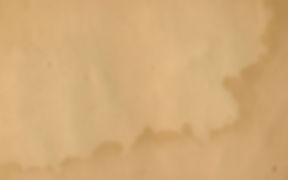
BLACK MOUNTAIN COMPLEX PETROGLYPHS
Recovering Indian history from ancient Native American rock writings.
Violent History:
The story of the Black Mountain Complex began several thousand years prior to the battle seven thousand years ago. It appears the paleo-Uto-Aztecan crossed the Bering Strait land bridge some twelve to fifteen thousand years ago, followed by the paleo-Hokan up to seven thousand years later.
Unless the paleo-Uto-Aztecan island hopped across the Pacific or circumnavigated the Pacific Rim, this would explain the presence of the Uto-Aztecan cultures positioned south of most Hokan cultural groups and deep into present day Mexico.
The periodic migration of the paleo-inhabitants of Mexico and Mesoamerica has been well documented. Therefore, it is safe to assume that perhaps as early as nine thousand years ago, at the beginning of the environmental Altithermal, an extended period of extreme heat and drought, the paleo-Uto-Aztecan began to migrate north to follow the game animals seeking water and food sources available in the mountains and valleys of the more northern latitudes, resulting in a collision of cultures with the southbound paleo-Hokan searching for a new homeland perpetrating a catastrophic war of survival.

The chart above demonstrates the relationship between environmental conditions, demographics of the four major ancestral groups associated with present day Indian cultures in California, advancement in weapons technology, the verbal histories of Native American informants and the three periods of genocidal war in which the Hokan and their allies and the Uto-Aztecan and their allies attempted unsuccessfully to exterminate one another over the past tweleve thousand years.
In the first section; Environmental Conditions, the horizontal banner illustrates the evolving environmental conditions over the past twelve thousand years. The two thousand year "Altithermal" period (red), which dried up lakes, rivers, streams and other sources of water, killing food source vegetation for both animals and humans provides a prudent reason for both cultures to commit to a wholesale slaughter of their enemies in order to insure the survival of "the people" to which both of these two cultural groups referred to themselves.
In the second section; Demographics, the horizontal banners (green, red, yellow and blue) illustrate the demographics of the four major ancestral groups (Penuitian, Hokan, Uto-Aztecan and Athapaskan) of Native Americans in what is today, within the confines of the state borders for California. Note; there is a two thousand year period (black) where the Uto-Aztecan seemed to have disappeared from the Mojave Desert. It is currently conjectured that this two thousand year hiatus of the Uto-Aztecan corresponds with the period between the first and second genocidal wars of the two major protagonists, Hokan and Uto-Aztecan, without the assistance of their respective future allies, the Athapaskan and Penucian peoples.
In the third section; Verbal Histories, three verbal stories, defined by early anthropologists to be "fantasy" history, suggests that early Native American informants may have provided accurate information, but that the information provided may have been misinterpreted, intentionally or otherwise, by the Native American translators, the anthropologists or both, due to preconceived bias about Native American tribal affiliations, intelligence and/or organizational development .
In the fourth section; Weapons, the horizontal banners (tan, yellow and blue) demonstrate the development of the thrusting spear, atlatl and bow and arrow. The introduction of the atlatl corresponds with the first genocidal war, but the advent of the bow and arrow precedes the third genocidal war. The availability of the bow and arrow to both sides resulted in a wartime stalemate. Neither side of the issue has been able to claim victory. The fighting between these two cultures represented by the Hopi and Navajo is now conducted in courts-of-law. Not on bloody battlefields.
In section five; Genocidal War, the three periods of "absence of human life" from the Mojave Desert are superimposed over the four horizontal timelines to facilitate comparison of the periods of war violance with the overall advancement of twelve thousand years.
These three periods of genocidal war have been charterized as "unknown events" that resulted in the "absence of human life". This appears to be coded phraseology for the subject of war and violence which are political landmines for die-hard Morganist anthropologists educated during the extended era of philosophical influence promulgated by British anthropologist, Sir Eric Thompson, post World War I.






The purpose of this site is to inspire awareness, preservation and research of all rock art/writings. As the site grows and develops, it is hoped that YOU will help in these efforts by submitting questions, comments and suggestions: Our primary means of communication is the 'Contact' button above.
© 2023 by My site name. Proudly created with Wix.com